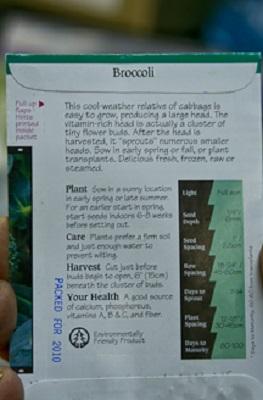
Planting vegetable seeds in the garden
- Consult the back of the seed packet for guidance on when to plant seeds in the ground;
- A good rule of thumb is to sow seeds 2 to 3 times deeper than their width;
- Sow seeds more deeply in light, sandy soil and less deeply in heavier, clay soils;
- With cloddy or crusty soils, it may be helpful to apply a narrow band of fine compost or vermiculite over the row after seeds are planted. This will hold soil moisture and reduce crusting, making it easier for seedlings to push through the soil surface;
- Firm the soil over your seeds to hasten germination. Some gardeners lay boards or row covers over newly planted seed during warm weather to keep the bed moist. You must check daily for signs of germination;
- Soil temperature has a major effect on the speed of germination. In the spring, the soil is often cold, and large seeds (i.e., corn and beans) may rot before they can sprout;
- Corn and beans are often planted in single rows, whereas cucurbit (cucumber, squash) are sometimes planted 4 to 6 seeds to a hill or mound;
- Crops such as spinach, peas, beets, lettuce, and carrots are often sown in wide rows or beds instead of in long single rows. Sow seed evenly over the area, then rake in gently;
- Large seeds, such as pumpkin, squash, bean, and corn, can usually be planted at the correct spacing (indicated on a seed packet). It is much more difficult to precisely plant small seeds. You should expect to thin out excess seedlings later to achieve the desired spacing.